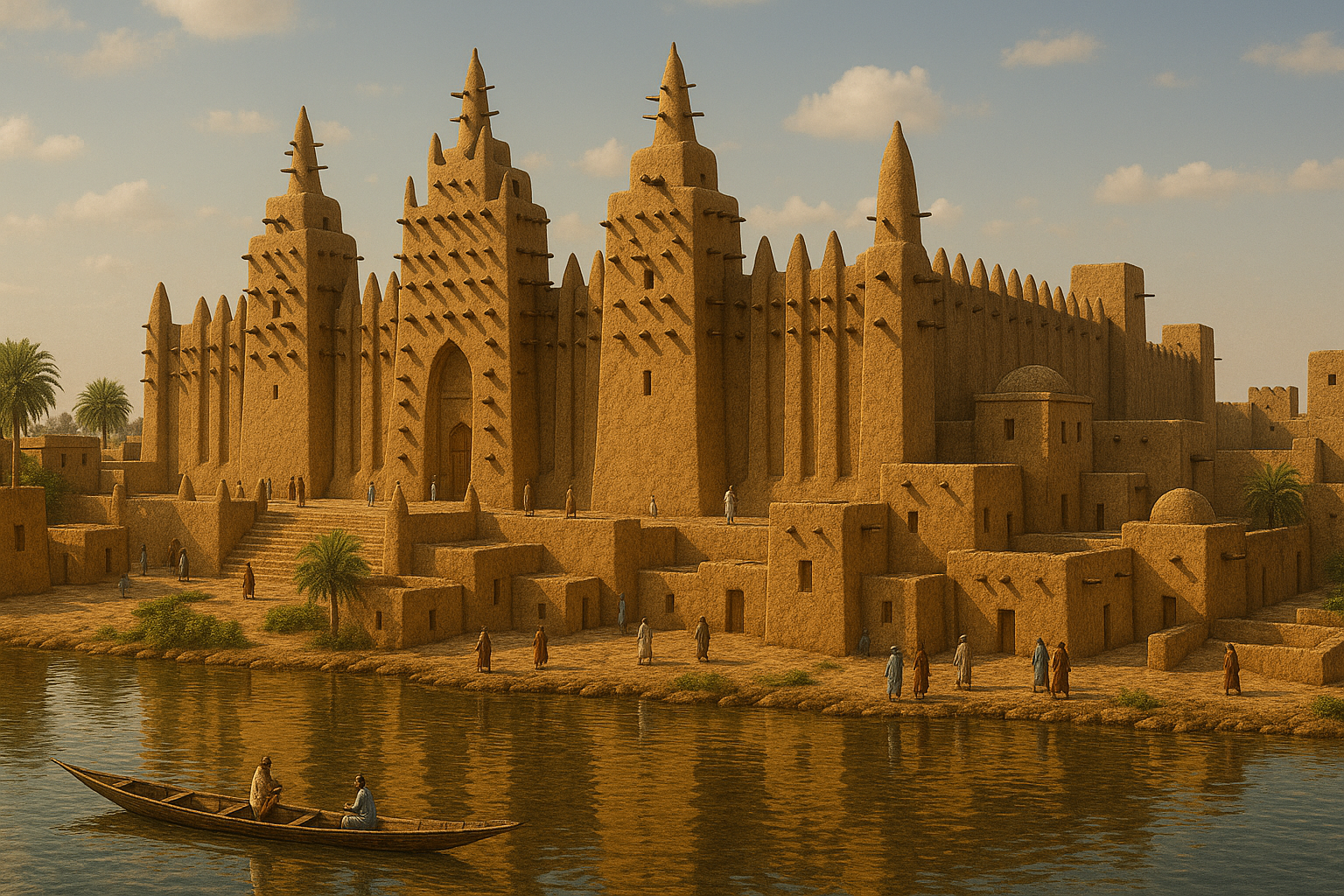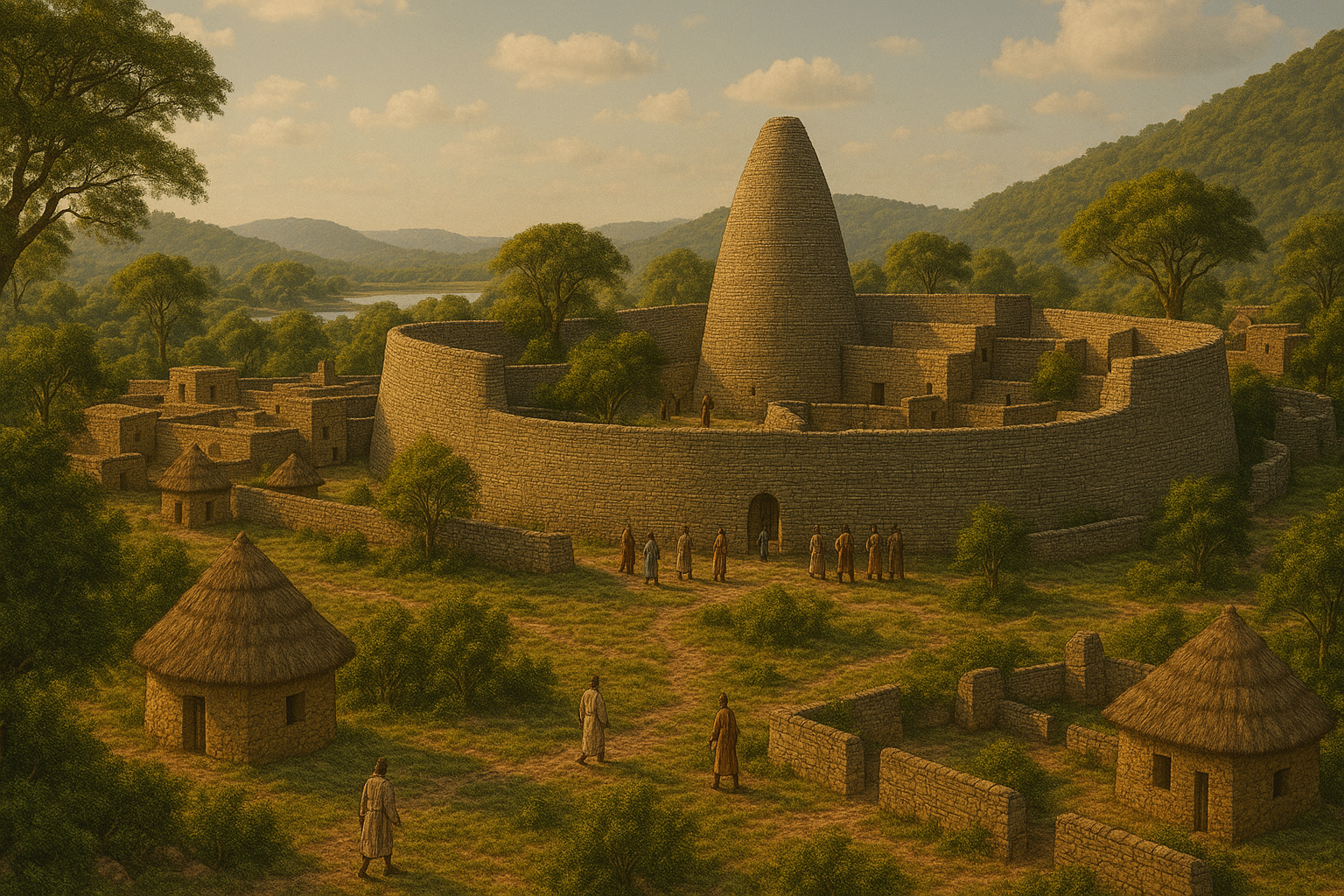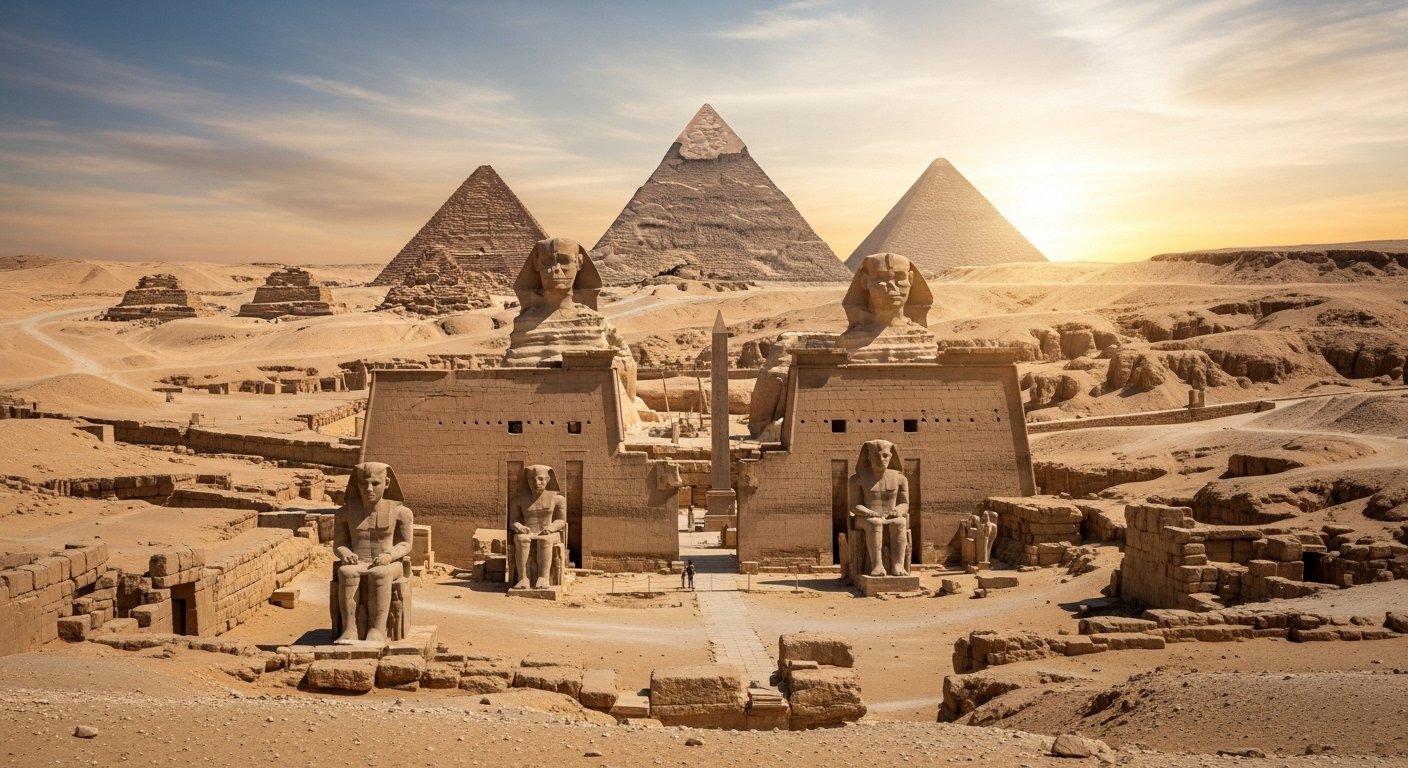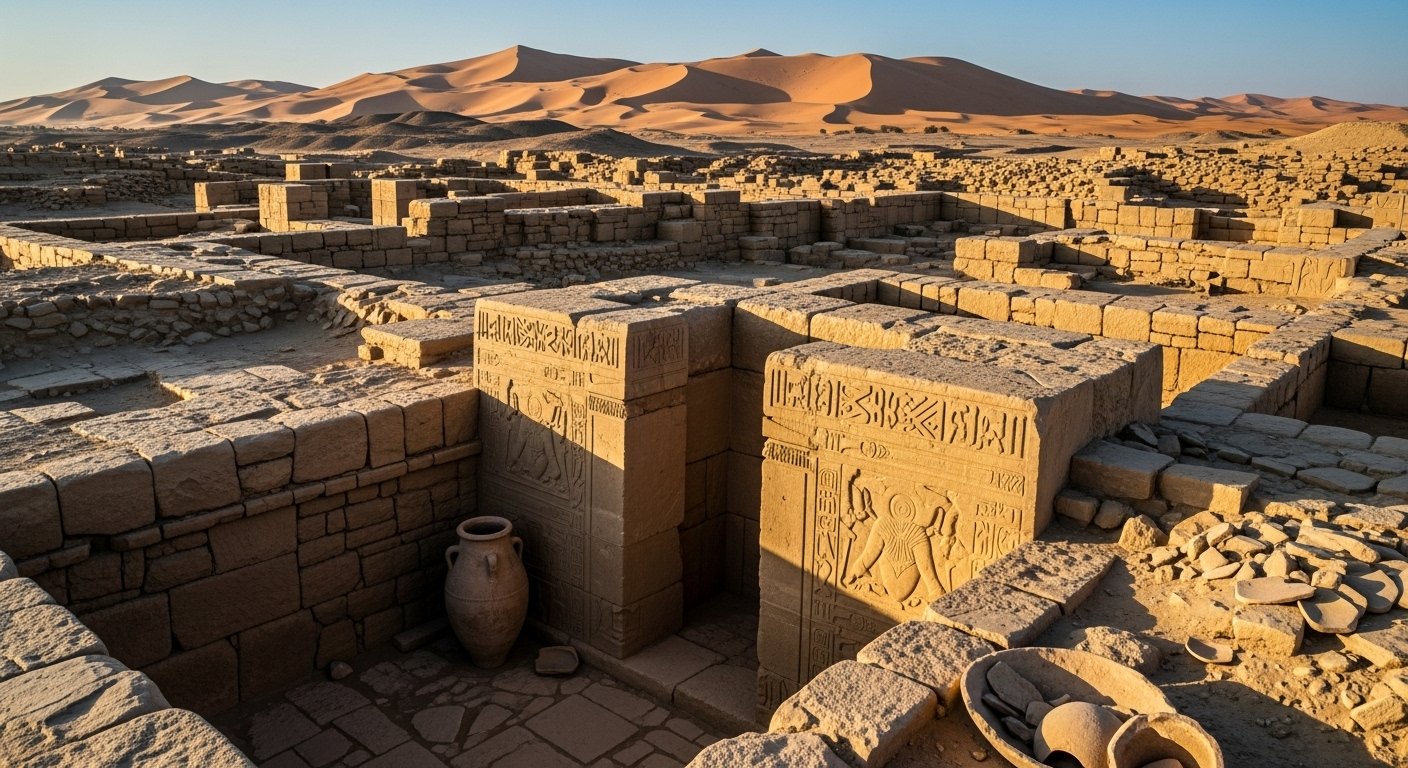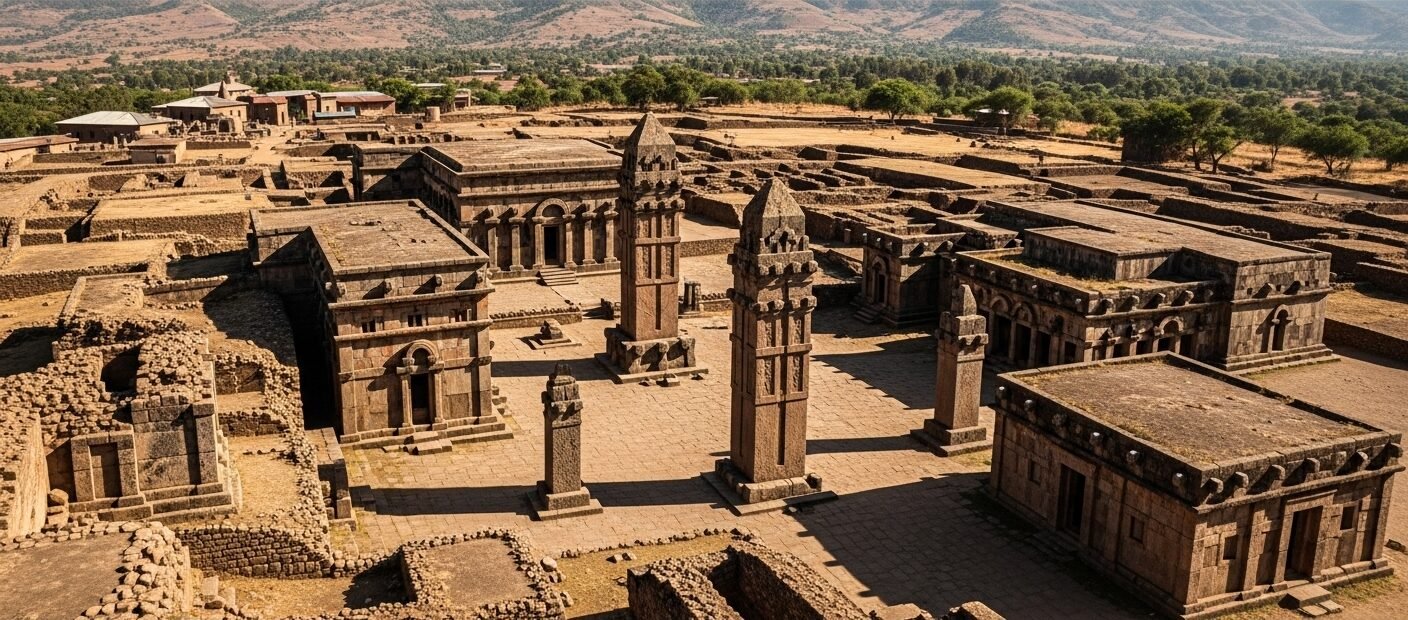Great Kingdoms of Ancient Africa
“Explore the legacy of Africa's greatest civilizations.”
Early Civilizations Timeline
🏺 Kingdom of Egypt (c. 3100 BCE – 30 BCE)
🔸 Title & Dates
Kingdom of Egypt
c. 3100 BCE – 30 BCE
🔸 Intro Summary
The Kingdom of Egypt was one of the world’s earliest and most enduring civilizations, flourishing for over three millennia along the fertile Nile River. Known for its divine pharaohs, towering pyramids, and complex spiritual beliefs, Egypt left a monumental legacy in human history.
🔸 Visual Showcase
Hero Image: The Great Pyramid of Giza or the Sphinx
Map: Nile River Valley showing major cities (Memphis, Thebes, Giza, Alexandria)
Gallery: Hieroglyphics, statues of pharaohs, tomb art, temples
🔸 Fast Facts Box
| Fact | Detail |
|---|---|
| Capital(s) | Memphis, Thebes, later Alexandria |
| Notable Rulers | Ramses II, Hatshepsut, Akhenaten, Cleopatra VII |
| Religion | Polytheistic (Ra, Osiris, Isis, Anubis) |
| Exports | Grain, papyrus, linen, gold |
| Writing System | Hieroglyphics |
🔸 Cultural Highlight
“The Afterlife and the Pyramids”
Egyptians believed in a detailed afterlife, which shaped their elaborate burial rituals. Pharaohs were buried with treasures, food, and sacred texts in pyramids and tombs meant to guide them to the next world.
🔸 Key Achievements
Constructed the Great Pyramids and temples like Karnak and Abu Simbel
Developed one of the earliest writing systems (hieroglyphics)
Pioneered advances in medicine, astronomy, and architecture
Created a 365-day calendar based on the sun and Nile cycles
Ruled by powerful pharaohs who were seen as gods on Earth
🔸 Quote or Excerpt
“To speak the name of the dead is to make them live again.” – Ancient Egyptian proverb
🔸 Optional Fun Fact
Did You Know?
Cleopatra VII, the last pharaoh of Egypt, spoke multiple languages and was the only Ptolemaic ruler to learn Egyptian!
🦁 Kingdom of Kush (c. 1070 BCE – 350 CE)
🔸 Title & Dates
Kingdom of Kush
c. 1070 BCE – 350 CE
🔸 Intro Summary
The Kingdom of Kush rose from the shadow of ancient Egypt to become a powerful empire in its own right. Based in Nubia, it conquered Egypt at its peak and built its own line of pharaohs during the 25th Dynasty.
🔸 Visual Showcase
Hero Image: Nubian pyramids at Meroë
Map: Nile River stretching from Egypt into Sudan
Gallery: Meroitic art, gold jewelry, temples, hieroglyphs
🔸 Fast Facts Box
| Fact | Detail |
|---|---|
| Capital | Napata → Meroë |
| Notable Rulers | Piye, Taharqa |
| Religion | Polytheistic (Egyptian influence) |
| Exports | Gold, ivory, iron |
| Writing | Meroitic script |
🔸 Cultural Highlight
“The Black Pharaohs of Egypt”
Piye, a Kushite king, conquered and ruled Egypt, founding the 25th Dynasty. His dynasty emphasized Egyptian customs while building unique Nubian monuments.
🔸 Key Achievements
Ruled Egypt during the 25th Dynasty
Built over 200 pyramids in Sudan
Mastered iron smelting
Developed a unique written language (Meroitic)
🔸 Quote or Excerpt
“I am Piye, son of the great god Amun. I captured all of Egypt, not by sword, but by the will of the gods.” – Stela of Piye
🐘 Carthaginian Empire (c. 814 BCE – 146 BCE)
🔸 Title & Dates
Carthaginian Empire
c. 814 BCE – 146 BCE
🔸 Intro Summary
Founded by Phoenician settlers in North Africa, Carthage became a powerful naval and commercial empire. It rivaled Rome and left a mark on Mediterranean history, especially during the Punic Wars.
🔸 Visual Showcase
Hero Image: Carthaginian harbor reconstruction
Map: Mediterranean trade network
Gallery: Coins, statues of Hannibal, ships
🔸 Fast Facts Box
| Fact | Detail |
|---|---|
| Capital | Carthage (modern-day Tunisia) |
| Notable Ruler | Hannibal Barca |
| Religion | Polytheistic (Phoenician pantheon) |
| Exports | Silver, purple dye, ceramics |
| Writing | Punic (Phoenician script) |
🔸 Cultural Highlight
“Hannibal’s War Elephants”
One of history’s boldest military feats: Hannibal led an army, including war elephants, over the Alps to attack Rome during the Second Punic War.
🔸 Key Achievements
Built an advanced navy and maritime empire
Conducted long-distance trade across the Mediterranean
Developed innovative shipbuilding and harbor engineering
Nearly defeated Rome in the Second Punic War
🔸 Quote or Excerpt
“I will find a way — or make one.” – Attributed to Hannibal
🏛 Kingdom of Aksum (c. 100 CE – 940 CE)
🔸 Title & Dates
Kingdom of Aksum
c. 100 CE – 940 CE
🔸 Intro Summary
The Kingdom of Aksum was one of the greatest trading empires of the ancient world. Located in modern-day Ethiopia and Eritrea, it was a hub of culture, religion, and commerce—and one of the first African states to adopt Christianity.
🔸 Visual Showcase
-
Hero Image: Obelisks of Aksum
-
Map: Red Sea trade routes
-
Gallery: Coins, stelae, Christian crosses
🔸 Fast Facts Box
| Fact | Detail |
|---|---|
| Capital | Aksum |
| Notable Ruler | King Ezana |
| Religion | Christianity (from 4th century CE) |
| Exports | Gold, frankincense, ivory |
| Writing | Ge’ez |
🔸 Cultural Highlight
“The First Christian Empire of Africa”
King Ezana converted to Christianity in the 4th century, making Aksum one of the world’s first Christian kingdoms. This legacy remains central to Ethiopian culture today.
🔸 Key Achievements
-
Minted coins (rare in Africa)
-
Built giant stone obelisks (stelae)
-
Controlled trade from Africa to India
-
Introduced Christianity to East Africa
🔸 Quote or Excerpt
“I, Ezana, king of Aksum, made the people bow to the faith of Christ.” – Inscription from Ezana Stone
Interested in Learning more History ?
- All Posts
- Blog
- Learning Center
- Back
- blog articles
- News and Update Blog
- Back
- Explore Africa's History
